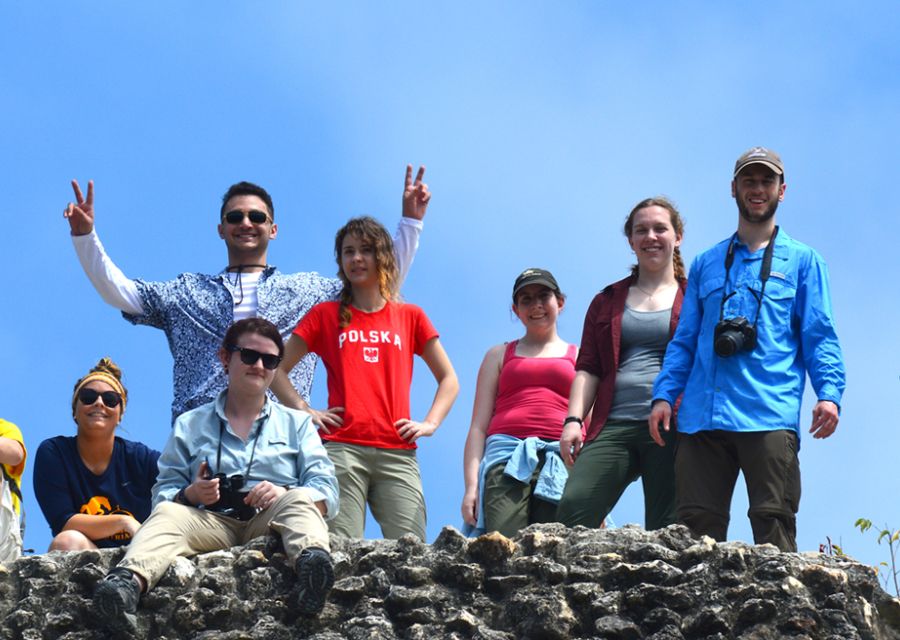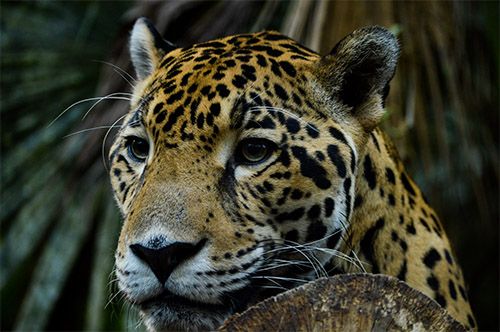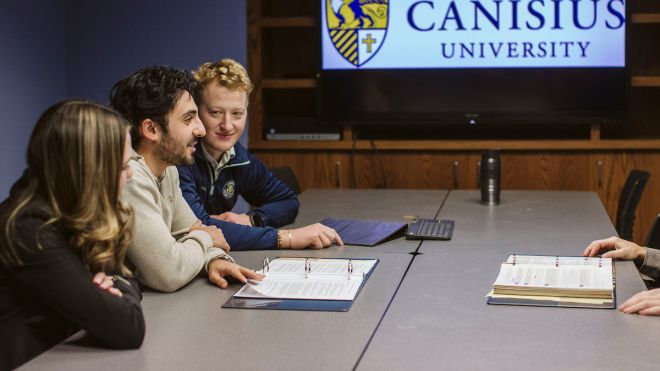
"All of us can cooperate as instruments of God for the care of creation, each according to his or her own culture, experience, involvements and talents."
-Pope Francis
From the Encyclical Letter Laudato Si: “On Care for Our Common Home”
From trapping a jaguar with a camera to listening to a bush doctor explain the medicinal benefits of a local plant, the students in Tropical Ecology and Conservation (ABEC 403) experienced a spring break unlike any other. Over 10 days they traveled with their professor, Dr. Robin Foster, to study the indigenous wildlife and habitats of northern Belize.
Animal Attractions and Mayan Treasures
Situated on the Caribbean coast, the tiny Central American country once known as British Honduras shares a border with Mexico and Guatemala. The total population is around 370,000, and although English is the official language, most Belizeans are fluent in Spanish and Kriol, an English-based creole language. With the largest barrier reef in the Western Hemisphere, Belize is also home to nearly 400 bird species, over 70 types of mammals as well as numerous reptiles, amphibians and insects.
The group toured the Belize Zoo, which exhibits more than 175 animals representing more than 45 native species. At Bermudian Landing, they visited a baboon sanctuary, home to black howler monkeys, an endangered primate species whose territorial cries can be heard up to three miles away. To conduct their field research, students learned how to use a camera trap. Equipped with a remotely activated camera and a passive infrared sensor, a camera trap uses still images or videos to unobtrusively record wildlife activity, often at night. The students documented the movements of several different animals, including a tapir, a margay, a jaguarundi and a red brocket deer.
For Jay Cooney ‘20, it was the red brocket deer that fascinated him the most. He recalls a chance sighting during a nocturnal hike at the archaeological site of LaMilpa. “The light cast by our headlamps revealed a tiny red doe, standing still against the edge of the forest and staring at us with the big yellowish orbs of her eyeshine. My heart raced and my hands shook rapidly as I raised my binoculars to gaze upon one of the fabled red brocket deer.”
In addition to its many natural wonders, Belize has a wealth of human-made treasures, most notably unexcavated pyramids and temples left over from the ancient Mayan civilization. When the students weren’t busy observing wildlife, they visited cultural sites and interacted with local residents. “We took an excursion one day to meet local Mayan women who showed us the traditions of dance and Pok-ta-Pok,” recounts Amy Bucklaew ’20. Invented around 1400 BC, the Mesoamerican ballgame of Pok-ta-Pok is more sacred ritual than mere sport.
Learning How to Coexist
The ABEC group learned about the important conservation work being done to protect Belize’s endangered species and natural ecosystems. But the trip also reminded students of the needs of a human population. During one of the tours, the group’s guide, a Belizean, pointed out how conservation practices can also impact the quality of life for people who rely on the land for basic survival. As the country’s poverty and unemployment rates continue to rise, communities must balance land preservation with responsible farming and ranching practices.
“For those of us in the West who do not have to worry about extracting the natural resources that compose our goods ourselves and instead receive them in neat packing, it is easy to condemn people who hunt or cut trees in protected areas as greedy villains,” Cooney explains. “In reality, poachers and illegal loggers in Belize are most often not acting out of contempt for the natural world, but doing whatever they can to provide for their families.”
Professor Foster hopes students gain a deeper, more nuanced understanding of conservation issues, one that recognizes the need for compromise and coexistence, especially in underdeveloped communities where economic resources are scarce. “Rarely is anything black and white, and we need to learn to look at each side of an issue.”
In fact, long before the effects of climate change on biodiversity began making newspaper headlines in the industrialized world, people in developing countries had already learned how to live in harmony with their natural environment. Today, Belizeans lead a low-carbon lifestyle centered on their survival, but they must still deal with the impact of climate change. And the reality is that nations like the United States are chiefly responsible for disrupting the global ecosystem.
Bucklaew, a dual major in ABEC and biology, plans to continue her research work in graduate school. “This course has taught me how to deal with trail cameras and running experiments in the field. But more importantly, it has taught me how to interact with locals, understand multiple sides to an argument, and work around cultural differences.”
For Foster, the best part of the trip was watching her students learn and grow from the experience. “If I had to pick one thing that was the most rewarding, it would be having the opportunity to see these students—many of whom had never been outside the United States or Canada before—interact with the local people and learn about the ways they view and interact with the natural world.”




